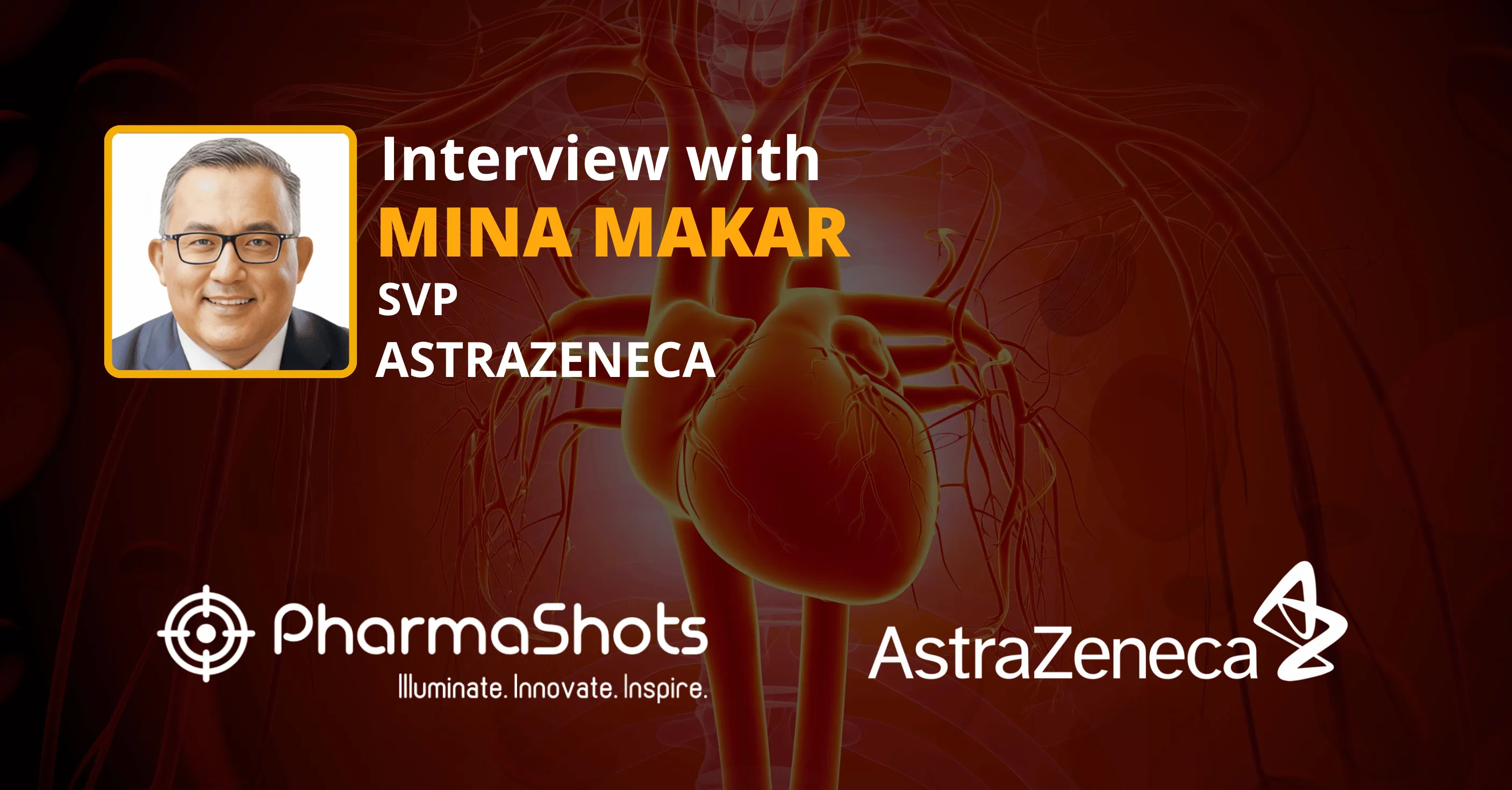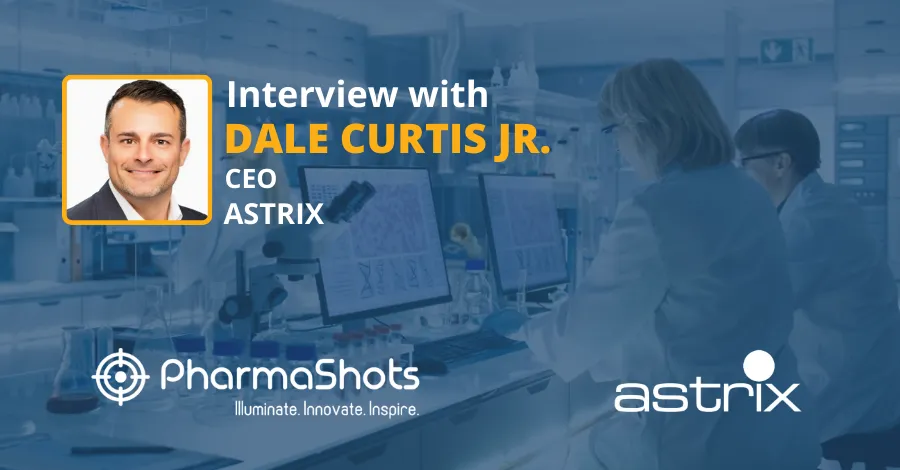
AstraZeneca at ERA’24: Mina Makar in a Stimulating Conversation with PharmaShots
Shots:
-
Recently, AstraZeneca presented findings from the real-world IMPACT CKD study, which evaluated the multifaceted impact of CKD on patients, healthcare systems, and broader society, projecting future implications through 2032.
-
The study emphasizes the importance of mitigating the economic burden on healthcare by implementing early, targeted screening, diagnosis, and treatment for CKD.
-
In collaboration with the Global Patient Alliance for Kidney Health, AstraZeneca launched a campaign called Make the Change for Kidney Health, urging governments and policymakers to prioritize CKD as a global public health concern.
Saurabh: What do you think are the main reasons behind the rising numbers of people affected by chronic kidney disease in Europe, based on your research?
Mina: If left unchecked, chronic kidney disease (CKD) is expected to become the world’s fifth leading cause of death by 2040. The lack of early screening programmes, with immediate access to treatment and care for those diagnosed means we are not detecting patients early enough to slow disease progression. There is a need for Regional and Country policies to enable this more broadly, especially for the at-risk individuals with other linked co-morbidities, such as cardiovascular disease, type 2 diabetes (T2D) and hypertension.
Saurabh: From what you've seen, how does chronic kidney disease put people at a higher risk of heart-related issues, even before they reach the stage of kidney failure?
Mina: CKD is a condition in which the kidneys progressively lose function and cannot filter blood nor balance the body’s fluids, salts and minerals as well as they should. The kidneys support the overall health of many of our organ systems, and because of this interconnectivity - damage to the kidneys increases the risk of cardiovascular complications, including heart failure and hypertension. If patients are identified and treated earlier, it’s possible to slow or halt the progression of CKD, prevent progression to kidney failure and reduce cardiovascular risk.
Saurabh: Can you share your thoughts on the main challenges when it comes to spotting chronic kidney disease early and making sure people get the treatment they need? What makes it so challenging?
Mina: CKD is one of the biggest public health challenges we face today. Yet it is vastly underdiagnosed, as it is often asymptomatic until it progresses to later, more severe stages. In fact, fewer than 10% of people with CKD are aware of their disease. While treatment options have expanded, low awareness and prioritisation of kidney health has meant that adoption of health policies and guidelines has lagged behind. Our ambition is for a future in which early detection, diagnosis and immediate access to recommended treatment and care can empower those affected by CKD to live better, healthier lives. Routine testing for people at high risk of CKD – with affordable, quick and simple tests delivered in a primary care setting already available – can help more people get diagnosed earlier and enable swifter access to potentially life-changing care.
Saurabh: Can you briefly tell our readers about the analysis from IMPACT CKD?
Mina: IMPACT-CKD evaluates the multifaceted impact of CKD on patients, healthcare systems and broader society and projects future implications of CKD through to 2032. Data from IMPACT-CKD presented at ERA Congress 2024 highlights the economic benefits to implementing early, targeted screening, diagnosis and treatment for CKD. These modelling analyses show the potential for €15.8 billion in savings for healthcare systems across four countries – Germany, the Netherlands, Spain and the United Kingdom – over 10 years by preventing cardiovascular events. Early and targeted CKD screening in patients with risk factors of type 2 diabetes and/or hypertension, and early use of guideline-directed medical therapies, could prevent nearly 1.7 million cardiovascular events over 10 years across the four countries, reducing the cost of managing these events.
Saurabh: Can you further elaborate on the projected reductions in cardiovascular events and linked healthcare costs resulting from early identification and treatment of chronic kidney disease across these countries?
Mina: Modelling of the four European countries – Germany, the Netherlands, Spain and the United Kingdom – projects that in patients at high risk of CKD, targeted screening and early use of guideline-directed treatment would result in approximately 774,800 fewer heart attacks, 554,400 fewer hospitalisations for heart failure (HHF) events and 338,200 fewer strokes over 10 years, compared to current practice. The associated cost savings from reduced clinical events would amount to nearly €15.8 billion over the 10-year period – equivalent to the combined average salaries of over 290,000 hospital nurses across the four countries. A second analysis from IMPACT-CKD underscores the potential clinical benefit of targeted screening and guideline-directed medical therapy for patients at high risk of CKD, and forecasts a reduction in the incidence of undiagnosed CKD, dialysis, cardiovascular events and mortality across these European countries compared to current practice.
Saurabh: Looking ahead, what areas do you think future research should focus on when it comes to understanding the costs linked to screening for kidney problems and using the right medications, based on your findings?
Mina: We continue to invest in CKD real world evidence and modelling studies to increase the understanding of disease prevalence, management and impact on patients, caregivers, healthcare systems, economies and the environment. Evidence from these types of studies help to build a picture of the impact of CKD, demonstrating both the urgent need for improved CKD policies and the potential for such changes to lead us toward a brighter future. AstraZeneca’s ACT on CKD initiative aims to educate, improve outcomes of CKD worldwide and reduce progression to kidney failure by 20% by 2025. AstraZeneca, alongside the Global Patient Alliance for Kidney Health, recently launched ‘Make the Change for Kidney Health,’ a campaign calling on governments and policymakers to make CKD an urgent global public health priority. AstraZeneca is committed to developing innovative solutions across the continuum of CKD care, aiming to transform kidney health and reduce the proportion of patients developing kidney failure by 33% by 2030.
Saurabh: Considering the implications of your study, what ideas do you have for policies or actions that could be put in place, either nationally or across Europe, to make sure we're catching and treating chronic kidney disease sooner rather than later?
Mina: Through the ‘Make the Change for Kidney Health’ campaign, we are calling on governments and policymakers to 1) elevate CKD as an urgent global health priority; and 2) implement patient-centered and evidence-based policies to: detect and diagnose patients at earlier stages of this chronic progressive disease and enable immediate access to care and recommended treatments to slow CKD progression and prevent kidney failure. Taking action on kidney health will deliver five key benefits; it will transform lives for patients and populations, improve healthcare system resilience, ease the burden on caregivers, increase productivity to support economies , and secure a more sustainable future.
Image Source: Canva
About the Author:

Mina Makar
Mina Makar is the Senior Vice President and Commercial Lead of the Global Cardiovascular, Renal, and Metabolism (CVRM), BioPharmaceuticals Business Unit at AstraZeneca. In this role, Mina addresses the critical unmet needs in four interconnected disease areas: metabolism, heart failure, cardiovascular disease and renal diseases. Through expanding the use of medicines today, and developing the next wave of innovations while advancing the pipeline, he drives the ambition to improve and save lives for the millions of people who are living with the complexities of CVRM diseases.
His 30-year healthcare career began as a pharmacist and includes over two decades with AstraZeneca, encompassing experience in marketing and sales, payer and access strategies, as well as leadership and engagement. His previous role as SVP of US Respiratory & Immunology highlights a track record of achievement, including significant franchise growth and successful new product launches, such as the company's first respiratory biologic.
Makar's dedication to the use of digital technologies and engaging with industry partners to transform science, has been pivotal to driving earlier diagnosis for CVRM patients, advancing understanding of disease drivers, and helping to bring medicines to patients faster. His leadership in CVRM extends to embedding sustainability into every initiative, from the laboratory to the patient to strengthen healthcare systems to be more accessible and resilient.
Related Post: Unlocking Approval: Baldo Scassellati Sforzolini from Galderma in a Stimulating Dialogue Exchange with PharmaShots
Tags

Saurabh is a Senior Content Writer at PharmaShots. He is a voracious reader and follows the recent trends and innovations of life science companies diligently. His work at PharmaShots involves writing articles, editing content, and proofreading drafts. He has a knack for writing content that covers the Biotech, MedTech, Pharmaceutical, and Healthcare sectors.














